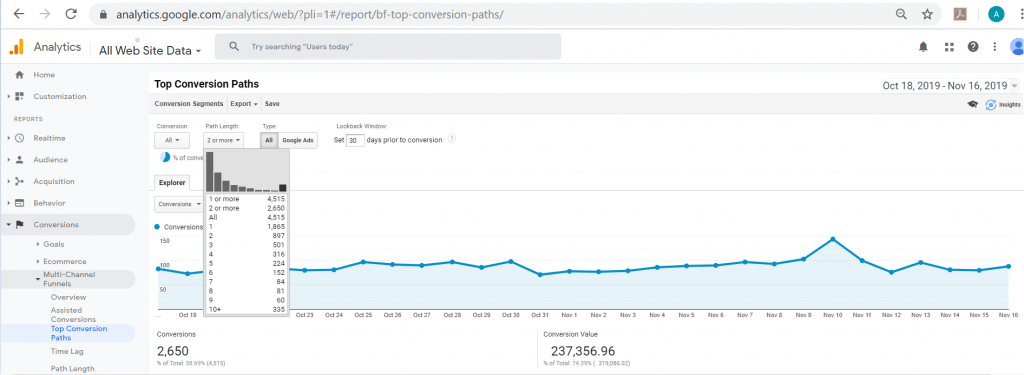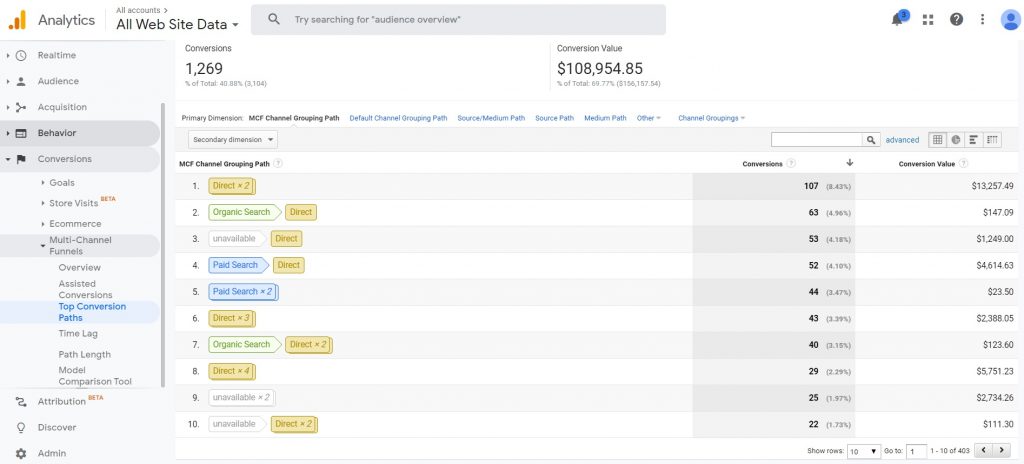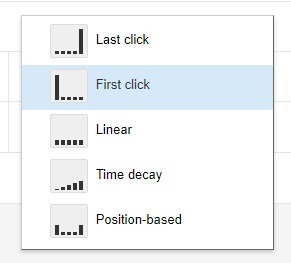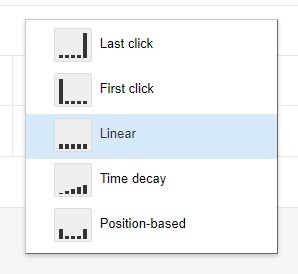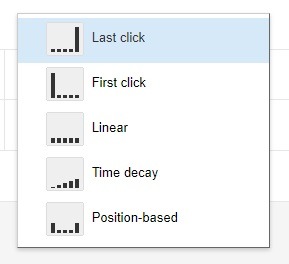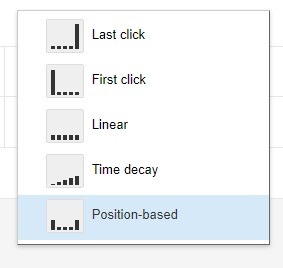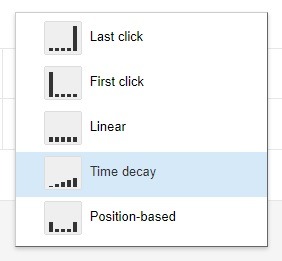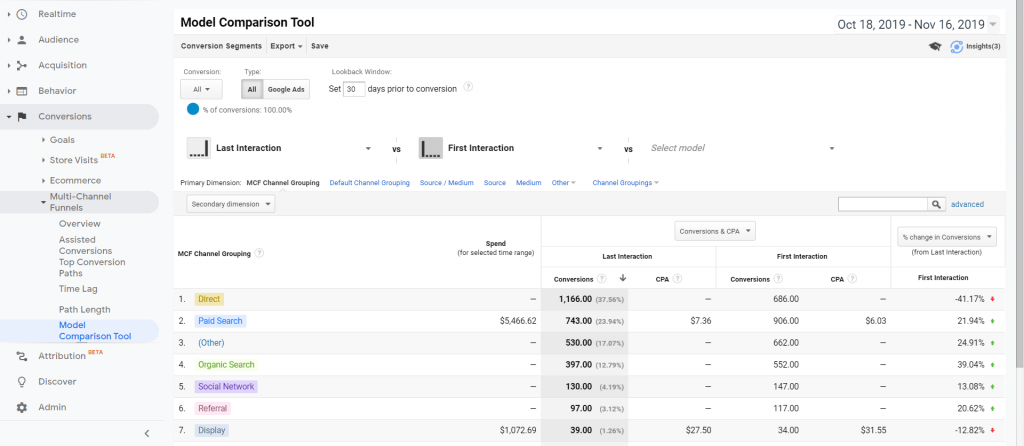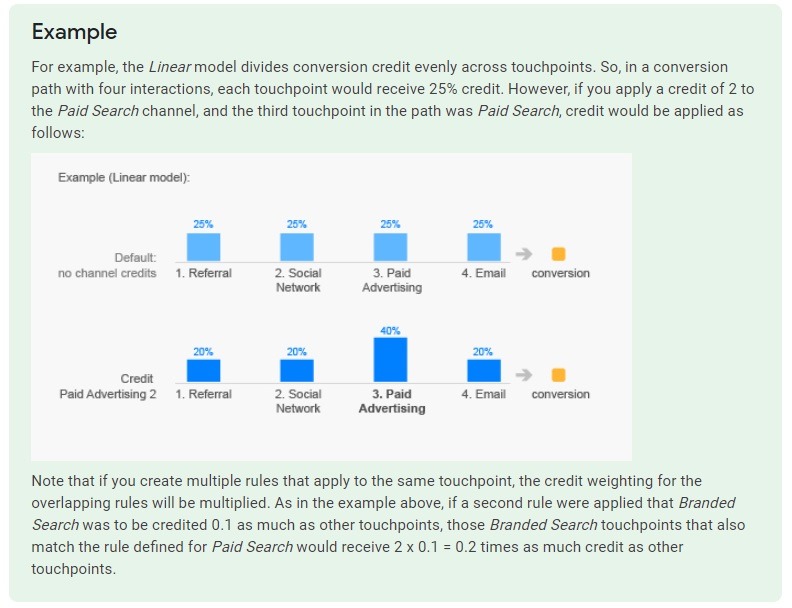So, here’s the thing: your eCommerce attribution modeling strategy is probably costing you sales. Why? There is a significant chance that you are reading your Google Analytics and Tag Manager data wrong, which can result in incorrect assumptions and counter-strategies that ultimately hurt your eCommerce business in a considerable way.
Relying on Google Analytics’ default settings – the last time a user visited your site – means you aren’t looking at the whole picture, which leads to decisions based on misinformation. Misinformation that could lead you to pause campaigns you think aren’t working, when in fact, they are.
Newbie Tip: If you have just launched your store or are about to start your online business and are a total noob with Analytics, you may want to review this beginners’ guide first: Google Analytics For eCommerce.
This is where eCommerce attribution modeling strategies come in.
Attribution modeling is the way you assign value for conversions through your PPC campaigns, email marketing, SEO, referrals and more, to determine how each channel has impacted each of your conversions. Think of Analytics as the platform where you can review shopper behavior, and attribution as the indicator of each channel’s effectiveness in generating that behavior. A perfect symbiotic relationship for improving eCommerce success.
Considering the variety of marketing channels we use today and the broad reach of your sales funnels, it is no wonder that keeping track of the efficiency and effectiveness of each to boost sales can feel overwhelming. Add that to the increase in attribution modeling strategies; it is difficult for even the most experienced marketers to get a handle on it.
Take This eCommerce Traffic Scenario as an Example
Web browser Pam is looking for tips on buying the best yoga leggings. She comes across your popular blog post, “How to Choose the Right Yoga Leggings,” but after reading, leaves your store. In the next couple of days, thanks to your Facebook remarketing campaign strategy, Pam sees an offer for yoga leggings on your store in her newsfeed. She clicks it, looks at your offer, but doesn’t go further. After a week, Pam is ready to buy her yoga leggings, so she googles ‘buy yoga leggings online,’ and sees your paid Search Ad – which she clicks and then completes the purchase.
Using this scenario, let’s look at three attribution strategies.
The Last Interaction
Last interaction is the default attribution model that Google uses. This will only show the last time a visitor explored or engaged with your online store and by which channel they got there before they converted. So in our scenario above, this would show Pam’s last interaction with your store before she bought the yoga leggings and allocate that as the converting channel/medium – which would be a Google Search Ad.
The First Interaction
However, the first interaction Pam had with your store was when she discovered your eCommerce blog. The first interaction attribution here would, therefore, show you that the conversion was generated from organic search. In short, the first interaction is where Google attributes the original way a shopper first found your store as the conversion source.
The Linear Approach
Linear attribution will track all the channels Pam used on her journey to buying from your store. This will include everything from when she first discovered your blog post to when she finally clicked ‘pay’ in your checkout. In this scenario, it would include the organic, Facebook and Google channels she passed through.
And that’s just the tip of the eCommerce attribution modeling iceberg with a variety of attribution modeling tactics to consider.
What Does That Mean?
As you can see from this example, if you had looked just at the default last interaction, you would have missed out on the importance of your blog content. Or, if you had looked at the first interaction only, you would have missed out on the importance of your Google campaign. Both of which could have led you to make unsound marketing decisions. And with so many options and sources, it can get super tricky to navigate. Despite all this, as many as 55% of advertisers are still only using single-touch attribution models, with 28.4% not using any!
Which is where we come in…
In this post, we will take you through 6 steps to help you efficiently reassess or implement the best eCommerce attribution modeling strategy for your business. Tactics that will help you get a more comprehensive look at your paid and free cross-platform strategies to more accurately make marketing choices that boost sales.
Before We Start
Ideally, you will want to eventually aim for a custom model that suits your specific business, but first, you will need to build up your data collection and customer insights.
To find the best attribution model strategy, you will need to continuously track your data and customer behavior while simultaneously keeping a close eye on your goals and changing customer journey on the way to conversions – no matter how far down the line they are. To achieve this, you want to continuously assess your:
- Top conversion paths
- Channels that are assisting most in conversions
- Customers’ search and buying behavior
Step #1: Get Very Intimate with Your Data
Now onto the nitty-gritty of eCommerce attribution modeling: your data. If you want to boost sales, you need to win at eCommerce marketing. And to win at eCommerce marketing, your attribution modeling needs to be on point. This is not possible without having a deep understanding of your data, at all times, and using it to guide your decisions. Going into attribution modeling blind is basically throwing money away.
Bonus Content: 54 Top eCommerce KPIs to Monitor for Max Success
In short, if you are spending time, money or energy on it, you should absolutely be collecting data on it. The more data you have at your disposal, the more accurate your marketing and business choices will be. Most importantly, this will help you better understand the conversion paths your shoppers are taking, which you can then improve or build on, as opposed to just concentrating on the total sales counter.
Pro Tip: Don’t underestimate your LTVs! The lifetime value of each of your shoppers and your return rate have a big part to play in optimizing conversion paths. These shoppers are coming back repeatedly, and understanding the journey of their return is important for tapping into return business. We all know that it’s cheaper to convert existing customers than find new shoppers; recognizing how you’re getting them back to the store will help you create marketing directives to improve your return rates and build customer loyalty.
Step #2: Be Ready to Track Your Campaigns Like a Pro
Tracking your marketing campaigns, on every channel you’re using, is vitally important to ensuring the data you’re getting is as close to perfect as possible. Here are some campaign data collection must-dos to ensure you have all the information points you need:
- Use UTM Parameters: UTMs are tags (source, medium, campaign, term and content) that you add to campaign URLs to make sure Analytics is able to track behavior across all channels more easily. You can do this automatically with tools like Google’s Campaign URL Builder, which will ensure you can closely track email, social, guest posts, newsletters, banners and more.
- Enable Auto-Tagging for Google Ads: This will ensure all your Google Ads data is automatically imported into Google Analytics, thus enabling you to combine your Google Ads data with the rich post-click data Analytics provides.
- Set up Bing Webmaster Tools: You will also want insights into data from other search sites, which can prove helpful in collecting data for distribution modeling and marketing strategy changes.
Step #3: Do a Basic Conversion Path Analysis
Before you fine-tune or choose your eCommerce attribution modeling approach, you will want to analyze your basic conversion paths.
To access this report, click Conversions > Multi-Channel Funnels > Top Conversion Paths from your Analytics dashboard.
Google Analytics’ default for this will be two or more interactions, so ensure that you select ‘all’ for ‘path length’ as this shows you all the relevant data.
If you’re not currently familiar with Google Analytics’ multi-channel funnel reports, these include traffic-channel performance including organic search, referral traffic, direct traffic, paid Search and custom campaigns.
Pro Tip: Add a secondary dimension to a report by clicking ‘secondary dimension’ and adding some or all of the dimensions listed.
Your report will then look something like this:
Ultimately, this report will give you a much broader picture of your current conversion paths and therefore enable you to better choose the right attribution modeling for your business. Which brings us to the next step.
Step #4: Explore Your Out-of-the-Box Attribution Models
Next, it’s time to explore Google Analytics’ basic attribution models. Each of these can be rule-based or algorithm-based and single- or multi-touchpoint sophisticated. Each attribution model will have its own set of pros and cons, so it’s important to get a handle on all your options. Here is everything you need to know about Google’s out-of-the-box attribution modeling options for eCommerce.
1. First Click Attribution
As the name suggests, this attribution model takes into account the first touchpoint (channel or keyword) that brought a new potential shopper to your store.
Let’s say you are running a Google Search campaign and a potential shopper clicks your ad through to your online store’s URL. However, the target shopper takes a look around but doesn’t buy then and there. Instead, they come across a remarketing campaign while doing a future search – which they then click and buy. The conversion, when set up for first click attribution, will be allocated to your Search ad.
As you can therefore imagine, this can be very restrictive for those running a multi-channel, multi-tier marketing strategy as it won’t track what happens after that initial click. That’s not to say you should never use it; if you’re working on awareness goals, using first click modeling will show you which campaigns or platforms are top of your engagement funnels.
When to Consider First Click Attribution
Use first click attribution to track your awareness campaign effectiveness, show whether your targeting is on point, CTA is effective and keywords are performing – all leading to better awareness campaigns.
2. Linear Attribution
Linear attribution modeling will give conversion credit to all channels interacted with during the conversion journey.
Let’s say you own a print-on-demand t-shirt business and a potential shopper found you through a Search awareness campaign on Facebook. While they were there, they signed up for your emailer but didn’t buy. They then came back to your store after getting your store’s newsletter but didn’t hang out long and didn’t buy. However, during a Google search sometime later, they came across your remarketing ad and then converted. Linear attribution modeling will credit every engagement equally for the conversion – which, in this case, would be 33.3% Facebook, 33.3% email and 33.3% Google.
You will be forgiven for assuming that this model is idealistic, however, because it doesn’t weigh the credit for the conversion. In other words, it doesn’t take into consideration the significance of one stage of engagement over another, making it hard to establish your top channels, campaigns and engagements.
When to Consider Linear Attribution
Use linear attribution modeling if you want a comprehensive, full look at your marketing strategy as a whole. This is especially useful for newer marketers wanting to get an all-around look at all the channels that play a part in conversions.
3. Last Google Ads Click Attribution
The previous Google Ads click attribution model will give 100% of conversion credit to the last Google Ads click the conversion received. Because the model will ignore all other channels, it can be problematic, unless, of course, you want to determine which Google Ads campaigns are performing better than others in terms of conversions.
When to Consider Google Ads Click Attribution
Google Ads click attribution modeling should only be considered when you want to review all your Google Ads campaigns to identify ads and/or keywords that have resulted in the most conversions. This way, you can see which ads are resulting in the most revenue for your online store and which ones are sucking your budget dry with no results.
4. Last Click Attribution
Google’s default attribution model, last click attribution, will allocate the conversion to the last engagement. There is a reason why many PPC pros consider this a poor eCommerce attribution modeling choice.
Let’s say you’re an online health food store running a cross-platform marketing strategy to sell subscription services. A potential shopper first finds your brand by clicking a blog post on your site. Later, they see and click a Facebook ad but don’t buy yet. A week later, they see and click a Google remarketing ad while doing another health-related search, where they don’t buy but do sign up for your email newsletter. A few days later, they click a promotional email and eventually purchase a product from your store.
Last click attribution would allocate the whole conversion to email, ignoring all the other steps the shopper took on their journey.
When to Use Last Click Attribution
Although last click attribution will show you which touchpoint ultimately results in conversions, we only advise using this eCommerce attribution modeling if you are a new online store owner with limited budget and time. It will help you see which channels or keywords you should be focusing your budget on when you are new to eCommerce. In short, it’s a limited modeling strategy that won’t help you scale your business long-term.
Pro Tip: If you’ve been using and optimizing your marketing strategies based on last click attribution modeling for some time, then you have been tweaking out channels and keywords that haven’t resulted in conversions, without considering how they play a part in the bigger journey. This means that when you do change to other, more expert eCommerce attribution modeling strategies, it will take some time before you begin to see differences between the last click and other attribution models. In other words, you will need time to reestablish top-of-the-funnel channels and keywords.
5. Last Non-Direct Click Attribution Model
This eCommerce attribution model gives the conversion credit to the last engagement a shopper makes on their conversion journey that isn’t direct website traffic.
Let’s say you just made a sale on your online store thanks to a shopper typing your web address and going to your site directly. But on their journey to this point, they engaged with a Facebook ad, an email newsletter, organic Google search and finally, a Display Remarketing Ad. Last non-direct click attribution modeling would allocate 100% of the conversion to the last channel interaction that shopper had before they directly accessed your store to finally buy. In this case, that would be your Display Remarketing Ad.
When to Use Last Non-Direct Click Attribution
The thing is, just looking at direct traffic conversions doesn’t tell you anything about the success of your marketing strategy. Last non-direct click attribution modeling will allow you to dig much deeper into your direct sales data to fully understand the journey a potential shopper has taken before they know your store enough to become direct traffic. In short, this eCommerce attribution modeling strategy will help you uncover marketing triggers you can optimize or build on. However, it’s important to note that it will undervalue awareness and other top sales funnel campaigns.
6. Position-Based Attribution
Position-based attribution modeling for eCommerce allocates more credit to the first and last interactions, then splitting the rest among other touchpoints. Simply put, it allows you to create a combination of last and first interaction models – a hybrid, if you will. With this position-based attribution model, you are able to tweak allocation percentage settings based on your own data. However, the most common data configuration for the model is 40% for the first click, 40% for the last click and the remaining 20% split among the remaining channel engagements.
For example, let’s say a potential shopper first discovers your brand through an organic Google search where they clicked through to your store and added themselves to your mailing list. A few days later, they see your Facebook ad, followed by a newsletter in their inbox, a Google Display Remarketing Ad and ultimately a Google Shopping remarketing campaign in the weeks that follow. With position-based attribution modeling, the first click (organic search – 40%) and the last click (Google Shopping – 40%) will matter most, with the remaining 20% being split among the other touchpoints.
Tracking first and last interactions together is a clever way to assess your overall PPC marketing strategy. It weighs the importance of the initial traffic and final conversion equally, allowing you to track your branding (the first keyword that attracted the shopper) and remarketing campaign’s effectiveness, as well as a close look at which platforms helped you close the deal.
When to Use Position-Based Attribution
Position-based attribution modeling is ideal for growing eCommerce businesses wanting to tweak their whole marketing strategy, from awareness to closing. Recommended by many PPC experts, this eCommerce attribution modeling strategy offers the most comprehensive data of Google’s out-of-the-box modeling options. However, as it requires tweaking and a good understanding of your data, it may be a little complicated for brand new store owners.
7. Time Decay Attribution
Another out-of-the-box attribution model Google offers is time decay attribution. Time decay attribution modeling will heavily credit the engaged channels that happen nearer to the time of conversion. In a nutshell: the closer to the sale, the more credit a channel will be given.
Let’s say a customer found you first from a Facebook lookalike campaign. In the weeks that followed, they saw and engaged with Google Search campaigns using your branded keywords, Facebook remarketing campaigns, Google Shopping ads and then finally a direct hit to your site that ended with a conversion. Time decay attribution would then value the first interaction (Facebook ad) lowest and the last interaction (direct) highest.
The default for this model is 30 days, with a half-life of 7 days. This means 50% of the credit going to a touchpoint on the 7th day and 25% of the credit going to the touchpoint on the 14th day before a conversion.
When to Use Time Decay Attribution
This attribution model is particularly useful for those eCommerce brands that have shorter sales funnels or advertisers wanting to get data on the effectiveness of a short promotional campaign. It’s also a good attribution model to transition to from the default, on your way to the position-based modeling we mentioned above.
Newbie Tip: Before you jump to a position-based model, first change your eCommerce attribution modeling to time-decay if you’re scared. This is because it requires less tweaking and practice, allowing you to slowly adjust your marketing strategies and gather the data you need before upgrading to position-based modeling.
8. Data-Driven Attribution Modeling (Non-Rule-Based)
Lastly, let’s look at Google’s most dynamic eCommerce attribution modeling option: data-driven attribution. While all the previous models we have reviewed rely on general rules, data-driven attribution modeling uses your specific account data to reveal which channels, ads, keywords and campaigns have the biggest impact on your eCommerce goals.
In a nutshell, this eCommerce attribution model lets you insert your business goals and then weighs your touchpoints based on their effectiveness in reaching those goals – using a technical algorithm. This means it takes the guesswork out of attribution modeling and ensures that every touchpoint gets the value it deserves on a shopper’s journey to conversion. Here’s an example of how it works, from Google.
But beware, this attribution modeling strategy isn’t for everyone.
When to Use Data-Driven Attribution
If you are a well-established online store already generating consistent sales, then data-driven attribution modeling is a good option. However, to gain access to this attribution modeling strategy, you will need to be already getting at least 15k clicks and 600 conversions in a 30 day period. In number terms, you will need to be spending at least $10k per month on Google Ads alone to use this modeling option.
Step #5: Use Google’s Attribution Model Comparison Tool
Before you change your eCommerce attribution modeling strategy to one of Google’s out-of-the-box options we just reviewed, you will want to compare your options. The most effective way to do this is by using Google’s Multi-Channel Funnels Model Comparison Tool to see how the attribution models will impact your marketing channel valuation.
To find this tool, click Conversions > Attribution > Model Comparison Tool.
Additionally, Google’s MCF comparison tool will also allow you to create a custom, rule-based attribution model. This means you can tweak aspects of the rule-based attribution modeling strategies we have reviewed to evaluate your conversion path data based on your specific eCommerce business goals. Here are Google’s instructions on how to get this done:
- Click on the model drop-down selector, and choose “Create new custom model”.
- Enter a name for your model.
- Use the Baseline Model drop-down menu to select the default model you want to use as a starting point for your custom model. The baseline model defines how credit is distributed to touchpoints in the path before the custom credit rules are applied. You can choose Linear, First Interaction, Last Interaction, Time Decay, and Position Based as baseline models.
- (Optional) Set Lookback Window to On to specify a Lookback Window of 1-90 days.
- (Optional) Set Adjust credit for impressions to On to customize how impressions are valued.
- (Optional) Set Adjust credit based on user engagement to On to distribute credit proportionally based on engagement metrics.
- (Optional) Set Apply custom credit rules to On to define conditions that identify touchpoints in the conversion path according to characteristics such as position (first, last, middle, assist) and campaign or traffic source type (Campaign, Keyword, and other dimensions). After defining the touchpoints you wish to identify, specify how these touchpoints will be distributed conversion credit, relative to other touchpoints. See the next section for examples of custom credit rules.
- Click the Save and Apply button to start using your custom attribution model.
Step #6: Implement eCommerce Attribution Modeling
By now you should see that multi-touchpoint attribution is much better than single-touchpoint. The next question is, How do you implement a new attribution model and how will it adjust reporting?
When you change from a last-click interaction model to a multi-touchpoint strategy, you will want to review your results and ultimately customize your model to suit your specific goals. But first, it’s important to be able to read the new data your reports will show, in order to make informed, data-driven decisions.
Whether you are a newbie or an established store that has only been using the default attribution model, it’s important to understand that your reports will change. Here’s the perfect Google Ads tutorial video, which includes everything you should be watching out for when changing attribution models:
When it comes to implementing and winning with your eCommerce attribution modeling strategy, you want to ensure you:
- Compare: Use attribution model comparison to review alternative models and percent changes.
- Stay consistent: Choose a multi-touchpoint model that is in line with your goals and stick to it.
Conclusion
eCommerce attribution modeling is vital to ensuring you have a deep understanding of all your campaigns and channels that are engaged on your customers’ journey to conversion. Ultimately, for an attribution model to be optimal, you need to consider your own specific brand and eCommerce goals.
If you have more questions about choosing and implementing the best eCommerce attribution modeling strategy, post them in the comments below and our Analytics, PPC and eCommerce marketing experts will guide you further.

Nicole is a content writer at StoreYa with over sixteen years experience and flair for storytelling. She runs on a healthy dose of caffeine and enthusiasm. When she's not researching the next content trend or creating informative small business content, she's an avid beachgoer, coffee shop junkie and hangs out on LinkedIn.
Recommended articles
 Facebook Ads for eCommerce: 16 Strategies, Examples & Tips
Facebook Ads for eCommerce: 16 Strategies, Examples & Tips
 How to Build a Winning eCommerce Ads Strategy
How to Build a Winning eCommerce Ads Strategy
 Google Ads for eCommerce: Everything You Need to Know
Google Ads for eCommerce: Everything You Need to Know
 10X Your Traffic with PPC Management Software
10X Your Traffic with PPC Management Software
Comments
Powered by Facebook Comments
